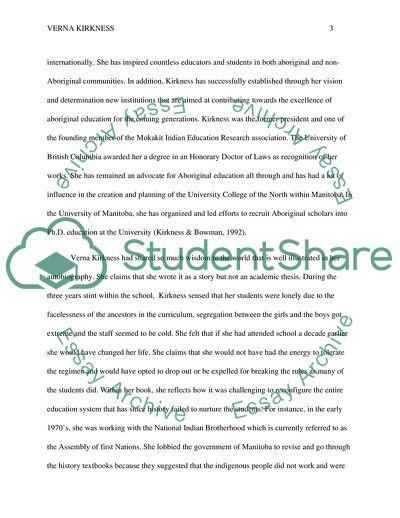Cite this document
(Verna Kirkness and Her Life Story Essay Example | Topics and Well Written Essays - 2250 words, n.d.)
Verna Kirkness and Her Life Story Essay Example | Topics and Well Written Essays - 2250 words. https://studentshare.org/social-science/1846958-verna-kirkness-this-is-for-first-nation-studies-in-canada-class
Verna Kirkness and Her Life Story Essay Example | Topics and Well Written Essays - 2250 words. https://studentshare.org/social-science/1846958-verna-kirkness-this-is-for-first-nation-studies-in-canada-class
(Verna Kirkness and Her Life Story Essay Example | Topics and Well Written Essays - 2250 Words)
Verna Kirkness and Her Life Story Essay Example | Topics and Well Written Essays - 2250 Words. https://studentshare.org/social-science/1846958-verna-kirkness-this-is-for-first-nation-studies-in-canada-class.
Verna Kirkness and Her Life Story Essay Example | Topics and Well Written Essays - 2250 Words. https://studentshare.org/social-science/1846958-verna-kirkness-this-is-for-first-nation-studies-in-canada-class.
“Verna Kirkness and Her Life Story Essay Example | Topics and Well Written Essays - 2250 Words”. https://studentshare.org/social-science/1846958-verna-kirkness-this-is-for-first-nation-studies-in-canada-class.


